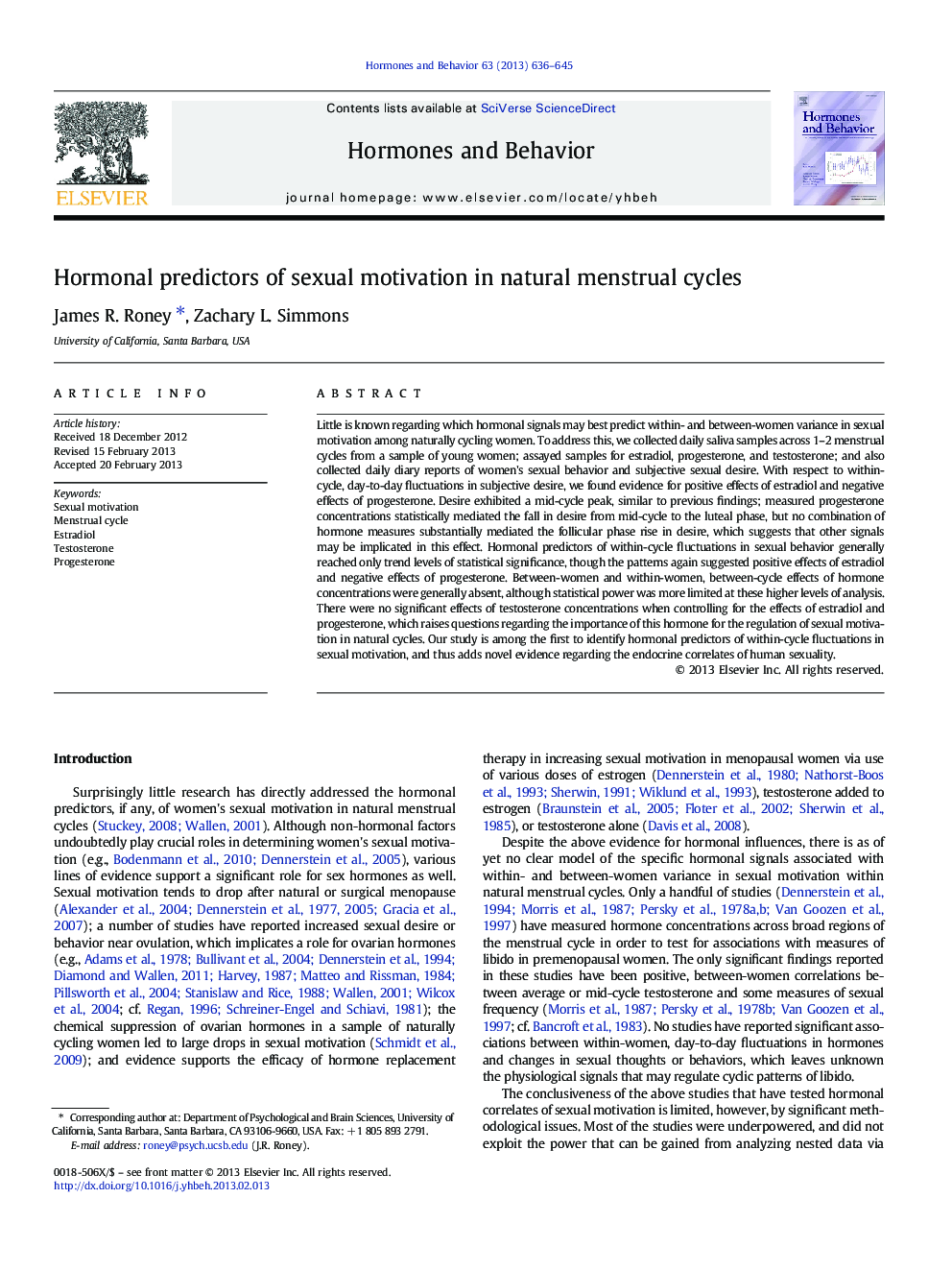| Article ID | Journal | Published Year | Pages | File Type |
|---|---|---|---|---|
| 322773 | Hormones and Behavior | 2013 | 10 Pages |
•Current and time-lagged estradiol positively predicted sexual desire and behavior.•Progesterone was a consistent negative predictor of sexual desire.•Women exhibited mid-cycle peaks in sexual desire.•Progesterone mediated the fall in desire from mid-cycle to the luteal phase.•Testosterone did not predict measures of women's sexual motivation.
Little is known regarding which hormonal signals may best predict within- and between-women variance in sexual motivation among naturally cycling women. To address this, we collected daily saliva samples across 1–2 menstrual cycles from a sample of young women; assayed samples for estradiol, progesterone, and testosterone; and also collected daily diary reports of women's sexual behavior and subjective sexual desire. With respect to within-cycle, day-to-day fluctuations in subjective desire, we found evidence for positive effects of estradiol and negative effects of progesterone. Desire exhibited a mid-cycle peak, similar to previous findings; measured progesterone concentrations statistically mediated the fall in desire from mid-cycle to the luteal phase, but no combination of hormone measures substantially mediated the follicular phase rise in desire, which suggests that other signals may be implicated in this effect. Hormonal predictors of within-cycle fluctuations in sexual behavior generally reached only trend levels of statistical significance, though the patterns again suggested positive effects of estradiol and negative effects of progesterone. Between-women and within-women, between-cycle effects of hormone concentrations were generally absent, although statistical power was more limited at these higher levels of analysis. There were no significant effects of testosterone concentrations when controlling for the effects of estradiol and progesterone, which raises questions regarding the importance of this hormone for the regulation of sexual motivation in natural cycles. Our study is among the first to identify hormonal predictors of within-cycle fluctuations in sexual motivation, and thus adds novel evidence regarding the endocrine correlates of human sexuality.
